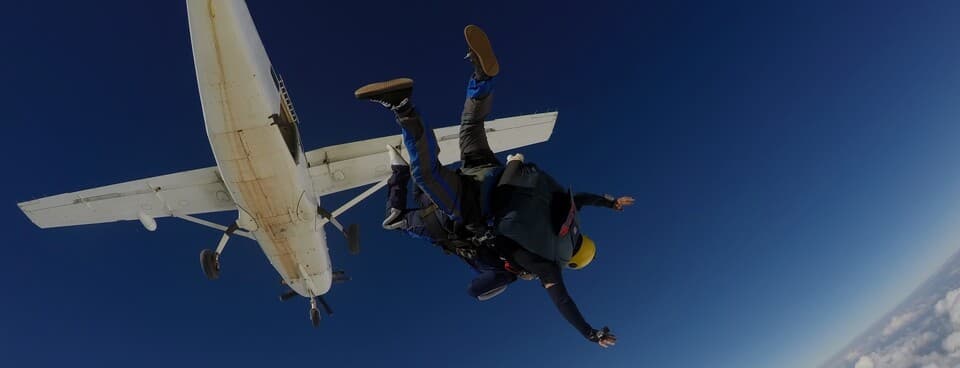
Skydiving, Parachute Jump
Discover the adrenaline of skydiving: an unforgettable experience.
Skydiving is more than just an extreme sport: it’s an experience that combines freefall and aerial dance, offering unique and unmatched sensations.
Imagine yourself thousands of feet above the ground, ready to jump into the void with breathtaking views of the landscape.
Résultats
- Indoor skydiving near Minneapolis
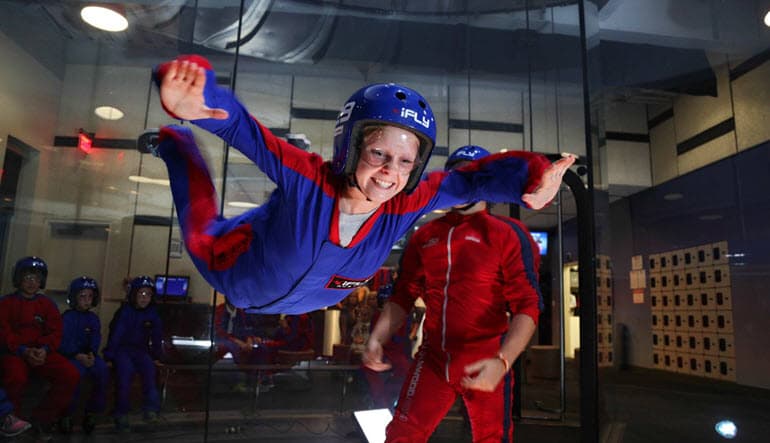
Indoor skydiving near Minneapolis From 62 €View55305, Minnetonka - Indoor skydiving near Charlotte
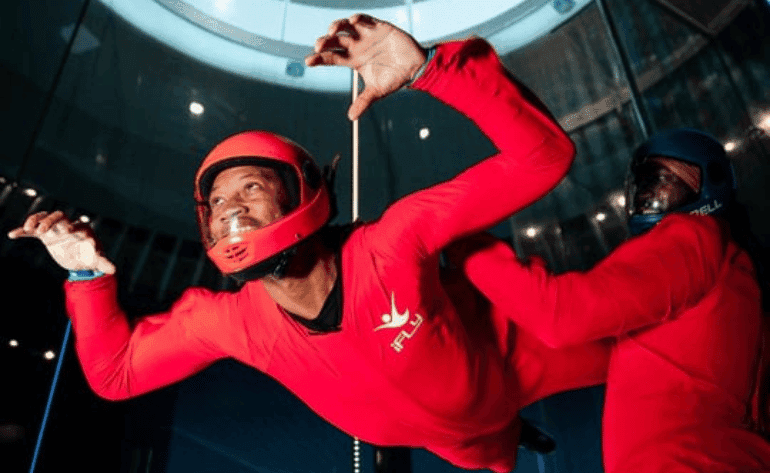
Indoor skydiving near Charlotte From 140 €View28027, Concord - Indoor Skydiving in Chicago
Indoor Skydiving in Chicago From 102 €View60610, Chicago - Indoor skydiving in Portland
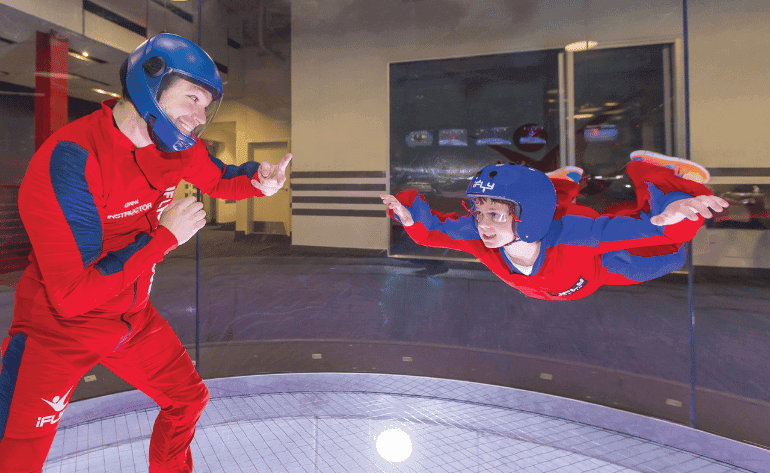
Indoor skydiving in Portland From 144 €View97223, Portland
Whether you are a beginner or an experienced skydiver, this extreme sport offers options adapted to all levels: tandem skydive, AFF (Accelerated Freefall), skydive. From the very first seconds of descent the sensation of freedom overwhelms you and a big rush of adrenaline as well. . After the parachute opens, a feeling of calm and serenity sets in, allowing you to fully enjoy the scenery, it’s the calm after the storm.
This activity allows you to push your limits and live intense moments, while enjoying a safe experience supervised by experienced professionals.
Our partners, all USPA (United States Parachute Association) approved skydiving schools, are equipped with gear guaranteeing optimal conditions for each jump. The instructor teams are made up of enthusiasts, all certified and with many jumps, ready to share their know-how and their passion for skydiving. Each session begins with a complete briefing on safety instructions and jump techniques, preparing you mentally and physically for the experience that awaits you.
Tandem jumps in the Sierra Nevada, in Florida, on the California coast or near Las Vegas, are regularly offered as a gift to mark important events: birthday, bachelorette or bachelor party, wedding or even Valentine’s Day. It’s an original gift idea .
The different first-time skydives
Why do a first-time skydive?
Skydiving is an incomparable experience that attracts many thrill-seekers. The chills flood your body from the exit of the aircraft, as you dive in freefall at a speed of about 120 mph (≈ 200 km/h). This sensation of flying in the sky is followed by a moment of serenity once the parachute is open. Breathtaking landscapes then stretch out beneath your feet. The United States is full of drop zones, like the drop zones in the Northeast along the Atlantic coast, and a skydive in North Carolina for example, where the thrills of the jump mix with the beauty of the landscapes in the Outer Banks region.
For beginners, the ideal option for a first experience is the tandem skydive. Strapped to a qualified instructor who manages all the technical aspects, the jump is accessible to most people.
Tandem jump
The tandem skydive: for those who want to discover skydiving without requiring prior training. Accompanied by an instructor, you are attached to them with a secure harness. It’s a first freefall experience supervised by a professional. They manage all stages of the jump, from exiting the aircraft to landing, for an unforgettable experience. If you have opted for one of the video options offered, the entire jump, from the ground to landing, will be filmed.
Solo jump: AFF course
The solo jump: for those who practice skydiving independently. Before being able to jump alone, it is necessary to complete comprehensive theoretical and practical training. This preparation, called Accelerated Freefall (AFF), generally takes about a week and includes 6 accompanied jumps and one solo jump.
During the accompanied jumps the instructor guides you and evaluates your skills. Once the training is completed and the skills validated, you obtain a certification recognized by USPA which allows you to jump alone.
Indoor skydiving
Indoor freefall simulators (vertical wind tunnels or indoor) reproduce the sensation of freefall indoors thanks to a powerful airflow. The sensations are a little different, because you feel more carried by the airflow than falling, but the techniques to apply are very similar to a real jump, allowing you to discover freefall in complete safety.
Where to skydive?
There are drop zones throughout the United States; for example you could make a skydive in California near Los Angeles or on the edge of the Pacific Ocean. Not very far from there, skydives in Nevada with some of the most popular jump areas around Las Vegas. We offer jumps in many states on some of the most beautiful locations in the country.
Preparation and progress of a skydive
Briefing and safety instructions
The day begins with a complete briefing by an instructor from the skydiving center. This briefing covers all safety rules, the positions to adopt during freefall and landing, as well as emergency procedures to know how to skydive; all these explanations will be very useful for the rest.
The equipment is regularly maintained and checked before each jump. All tandem jumps are supervised by an experienced instructor.
Equipment and gear used
The equipment for a skydive mainly includes a harness, a main parachute and a reserve parachute. The harness keeps you attached to the parachute and automatic activation devices ensure an opening at a certain altitude if you have not opened your parachute manually. Before each jump, the equipment is checked by the instructor to guarantee perfect working order. Jumpsuits and helmets are also provided to ensure your comfort and safety.
The different phases of the jump
Ascent in the plane: You board the aircraft and begin the climb to jump altitude (13 000 ft approximately). During this flight, you enjoy spectacular views and feel the adrenaline rise.
Exit from the aircraft: Once altitude is reached, the aircraft door opens and you position yourself at the entrance, ready to jump. Whether for a tandem skydive or a solo jump, this moment is intense.
Freefall: As soon as you leave the aircraft, you enter the freefall phase, reaching speeds of up to 120 mph (≈ 200 km/h). This phase lasts about 50 seconds for a jump at 13 000 ft.
Parachute opening: At about 5 000 ft, the main parachute opens, you go from a freefall at 200km/h to a calm descent under canopy, no more noise, everything is soothed.
Canopy ride: Once the parachute is deployed, the flight under canopy lasts 3 to 5 minutes to enjoy a peaceful descent to the landing area. It’s an opportunity to enjoy the breathtaking view that opens up to you and to savor the calm after the excitement of freefall. For those who want more, the pilot can descend faster by making tight turns.
Landing: This is a delicate phase, but perfectly controlled thanks to the instructions received during the briefing. You rejoin solid ground gently.
Required conditions
Skydiving in the United States, or elsewhere, is an activity accessible to most people, but certain conditions must be respected to ensure your safety and comfort.
Minimum age: 18 years to make a first-time skydive.
Weight and height: There are often weight restrictions between 220 and 250 lbs (≈ 100–115 kg). Ask the provider for confirmation.
Physical health: Participants must be in good physical condition. People with heart problems, chronic illnesses or recent injuries should consult a doctor before booking a skydive. It is also imperative not to consume alcohol or drugs before the jump.
Medical certificate: Some flight centers may require a recent medical certificate of no contraindications to ensure that you are fit to jump.
Arrival and preparation: It is advisable to arrive at least one hour before your skydive to have time to finalize administrative formalities, participate in the safety briefing and prepare yourself mentally and physically. For morning jumps, remember to eat something, even a little, a jump is very energy-intensive.
Equipment and clothing: The organizer provides all the necessary equipment, including the harness, the parachute, the jumpsuit and the helmet. Wear comfortable clothing and athletic shoes to ensure maximum comfort during the jump.
Do you have questions? We answer them.
What is the duration of a skydive?
The complete experience, from arrival at the club to returning to the ground, generally lasts between 1 to 2 hours. This includes the safety briefing, equipment, ascent in the plane, the skydive and the debriefing. The jump itself lasts about 50 seconds of freefall and 3 to 5 minutes of descent under canopy.
How much does a skydive cost?
The price for a tandem skydive is generally around 250 to 350 USD. An AFF course costs between 1500 and 2000 USD for the complete course. For indoor freefall, expect about 70 to 100 USD for sessions of 2 to 3 minutes per flight (often 2 flights).
The best skydiving spots in the United States
There is no shortage of drop zones in the United States, skydiving is very widespread across the country. In Perris or Lompoc in California for example, tandem skydives will let you discover freefall on the edge of the Pacific. In Florida, the offers for a first-time freefall near Miami are numerous, and around Las Vegas (Nevada) a very reputed school in the skydiving world.
It is therefore possible to find a skydiving school less than 2 hours from your home and this everywhere in the United States. In Colorado for example the possibility of skydiving near Denver.
How to offer a gift card for a skydive?
You just have to choose “offer a gift card” when making your reservation, you will immediately receive by e-mail a gift card valid for 1 year, allowing you to book a skydive for the date of your choice.
What happens in case of bad weather?
If weather conditions do not allow you to jump safely, the skydive will be postponed. A member of the center will contact you to reschedule your first-time jump at a later date.
What weight is needed to do freefall?
The weight limit is around 220 to 250 lbs (≈ 100–115 kg), the body mass index is also a factor to take into account.
Who cannot skydive?
People with heart problems, neurological disorders, recent injuries or serious medical conditions should consult a doctor before booking a skydive. A medical certificate may be required.
What is the best time of year for skydiving?
Freefall can be practiced all year round, but the most favorable weather conditions are in spring and summer, when temperatures are milder and wind conditions more stable. It is certain that freefall in the Northeast will be more complicated in terms of weather in winter than a zone in the South.
How should I dress for a skydive?
It is recommended to wear comfortable clothing and athletic shoes. The skydiving center will provide you with a jumpsuit and a helmet to ensure your safety and comfort during the jump.
What is an AFF jump?
The AFF jump is the first jump performed during an AFF skydiving course session. This introductory jump is accessible to everyone and is carried out at an altitude of 13 000 ft accompanied by two instructors.
Find more activities available in the United States
Powered by our partner GetYourGuide

